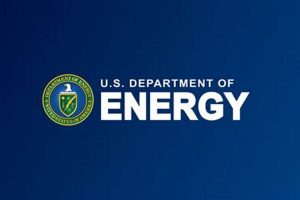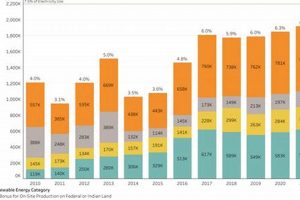High-yield opportunities in sustainable power generation encompass diverse options, including solar photovoltaic (PV) systems, wind turbine projects, hydroelectric power plants, geothermal energy installations, and biomass energy facilities. For instance, a utility-scale solar farm can generate substantial returns while contributing to decarbonization goals.
Capital allocation towards sustainable power generation offers significant advantages, from mitigating climate change risks to fostering energy independence and stimulating economic growth. Historically, conventional fossil fuels dominated energy markets, but technological advancements and growing environmental awareness are driving a shift towards cleaner alternatives. This transition presents attractive prospects for investors seeking both financial returns and positive societal impact.
The following sections will delve deeper into the specific advantages and disadvantages of various sustainable power options, offering a detailed analysis to guide informed decision-making.
Tips for High-Yield Sustainable Energy Investments
Strategic allocation in the renewable energy sector requires careful consideration of various factors. The following tips offer guidance for navigating this evolving landscape.
Tip 1: Diversify across different renewable energy technologies. A balanced portfolio encompassing solar, wind, and other technologies mitigates technology-specific risks and captures broader market opportunities. For example, combining investments in established solar PV projects with emerging geothermal technologies can balance risk and reward.
Tip 2: Conduct thorough due diligence. Evaluate the financial viability, regulatory landscape, and environmental impact of each potential investment. This includes assessing the developer’s track record, the project’s long-term sustainability, and potential environmental or social risks.
Tip 3: Consider the project’s location and resource availability. Solar projects in regions with high solar irradiance and wind farms in areas with consistent wind speeds offer optimal energy generation potential.
Tip 4: Assess the policy and regulatory environment. Government incentives, carbon pricing mechanisms, and renewable portfolio standards can significantly impact the profitability of renewable energy investments. Understanding the regulatory landscape is crucial for long-term success.
Tip 5: Evaluate long-term power purchase agreements (PPAs). Stable, long-term PPAs provide revenue certainty and enhance the bankability of renewable energy projects.
Tip 6: Explore community-based projects. Investing in local, community-owned renewable energy initiatives can offer both financial returns and social benefits, fostering local economic development and community engagement.
Tip 7: Factor in technological advancements. The renewable energy sector is constantly evolving. Staying informed about technological breakthroughs and emerging trends is vital for identifying promising investment opportunities.
By carefully considering these factors, investors can position themselves to capitalize on the growth potential of sustainable power generation while contributing to a cleaner energy future.
The insights provided in this guide offer a foundation for making informed investment decisions in the dynamic renewable energy sector. Further research and consultation with financial advisors are recommended before making any investment commitments.
1. Return on Investment (ROI)
Return on investment (ROI) serves as a critical metric for evaluating the financial viability of any investment, including those in renewable energy. Understanding ROI is essential for identifying optimal opportunities within the sustainable power sector.
- Direct Financial Returns
Direct financial returns comprise the profits generated from the sale of electricity produced by renewable energy projects. For example, a solar farm generates revenue by selling electricity to utilities or directly to consumers through Power Purchase Agreements (PPAs). These revenues, offset by operational and maintenance costs, contribute directly to the ROI of the investment. Higher electricity prices and efficient operations enhance direct financial returns.
- Tax Incentives and Subsidies
Governments often implement tax incentives and subsidies to encourage investment in renewable energy. These incentives can significantly impact ROI. Examples include investment tax credits, production tax credits, and grants for renewable energy projects. These financial benefits reduce the initial capital outlay and enhance the overall profitability of the investment.
- Long-Term Cost Savings
Renewable energy projects offer long-term cost savings compared to fossil fuel-based power generation. Once operational, solar and wind farms have minimal fuel costs, unlike conventional power plants that rely on volatile fossil fuel prices. These cost savings improve the long-term ROI and provide a hedge against future energy price increases.
- Environmental, Social, and Governance (ESG) Considerations
Increasingly, investors consider ESG factors in their investment decisions. Renewable energy investments align with ESG principles, attracting investors seeking both financial returns and positive social impact. This growing demand for ESG-compliant investments can enhance the value and ROI of renewable energy projects.
By considering these facets of ROI, investors can make informed decisions about allocating capital to high-performing opportunities within the renewable energy sector. A comprehensive ROI analysis requires careful evaluation of direct financial returns, available incentives, long-term cost savings, and the increasing importance of ESG factors.
2. Risk Mitigation
Risk mitigation is paramount when considering investments in renewable energy. A comprehensive understanding of potential risks and appropriate mitigation strategies is crucial for securing long-term returns and ensuring project success. Effectively managing risks contributes significantly to identifying and capitalizing on the best renewable energy investments.
- Resource Availability
Renewable energy projects depend on natural resources like sunlight, wind, and water flow. Variations in resource availability can impact energy generation and, consequently, revenue streams. For example, solar farms in regions with unpredictable cloud cover face higher resource risk. Thorough resource assessment, including historical data analysis and advanced forecasting techniques, is essential for mitigating this risk. Diversifying investments across geographies and technologies can further reduce dependence on a single resource.
- Regulatory Uncertainty
Government policies and regulations play a significant role in the renewable energy sector. Changes in feed-in tariffs, renewable portfolio standards, or tax incentives can impact project profitability. For example, retroactive changes to subsidy schemes can negatively affect investor returns. Careful analysis of the regulatory landscape and engagement with policymakers are essential for mitigating regulatory risks. Investing in projects located in regions with stable and supportive regulatory environments can also reduce this risk.
- Technology Risk
The renewable energy sector is characterized by continuous technological advancements. Investing in unproven or rapidly evolving technologies carries inherent risks. For instance, new battery storage technologies may become obsolete quickly, impacting the value of existing projects. Thorough due diligence, including technology assessments and expert consultations, is crucial for mitigating technology risks. Focusing on established technologies with proven track records can reduce exposure to this risk.
- Financial Risk
Financing renewable energy projects involves substantial capital investment. Securing financing at favorable terms and managing project costs effectively are crucial for mitigating financial risks. For example, cost overruns during construction can negatively impact project viability. Detailed financial modeling, robust cost control measures, and securing long-term power purchase agreements (PPAs) with creditworthy off-takers are essential for managing financial risks.
By proactively addressing these risks, investors can enhance the likelihood of success in renewable energy ventures. Effective risk mitigation contributes directly to identifying and selecting the most promising investment opportunities within the sustainable power sector, maximizing returns while minimizing potential downsides.
3. Technological Innovation
Technological innovation plays a crucial role in driving the advancement and adoption of renewable energy solutions. Breakthroughs in areas such as solar photovoltaic (PV) technology, wind turbine design, energy storage systems, and smart grid technologies directly impact the efficiency, cost-effectiveness, and overall viability of renewable energy investments. For instance, advancements in PV cell materials and manufacturing processes have led to significant cost reductions and increased energy conversion efficiency, making solar energy increasingly competitive with traditional fossil fuels. Similarly, the development of larger and more efficient wind turbines has enabled greater energy capture from wind resources, enhancing the economic attractiveness of wind energy projects. These advancements not only improve the performance and affordability of renewable energy technologies but also expand the range of potential applications, from utility-scale solar and wind farms to distributed generation systems and off-grid solutions.
The ongoing development of advanced energy storage technologies, including batteries, pumped hydro storage, and thermal storage, addresses the intermittent nature of renewable energy sources like solar and wind. Improved energy storage solutions enable greater grid integration of renewable energy, enhancing reliability and reducing reliance on fossil fuel-based backup power plants. Moreover, innovations in smart grid technologies optimize energy distribution and consumption, improving grid stability and efficiency. Smart grids facilitate the integration of distributed renewable energy resources, enhance demand-side management, and enable real-time monitoring and control of energy flows. These technological advancements contribute significantly to the overall performance, reliability, and economic viability of renewable energy investments.
Continued technological innovation remains essential for overcoming challenges and unlocking the full potential of renewable energy. Research and development efforts focused on further improving the efficiency, affordability, and scalability of renewable energy technologies are critical for accelerating the global transition to a sustainable energy future. The integration of artificial intelligence and machine learning in areas such as predictive maintenance, resource forecasting, and grid optimization offers further opportunities to enhance the performance and cost-effectiveness of renewable energy systems. As technological innovation continues to drive progress in the renewable energy sector, investors can expect to see a wider range of attractive investment opportunities with improved risk-return profiles, contributing to a more sustainable and resilient energy landscape.
4. Environmental Impact
Evaluating the environmental impact is a critical component of assessing renewable energy investments. Minimizing negative environmental consequences and maximizing positive contributions to ecological sustainability are essential for identifying truly optimal investments. The environmental impact assessment should encompass a comprehensive lifecycle analysis, considering all stages from resource extraction and manufacturing to operation and decommissioning.
- Greenhouse Gas Emissions Reduction
Renewable energy sources, unlike fossil fuels, produce little to no greenhouse gas emissions during operation. This significant advantage contributes substantially to mitigating climate change. For example, replacing a coal-fired power plant with a wind farm drastically reduces carbon dioxide emissions. The magnitude of emissions reduction is a key factor in evaluating the environmental benefits of a renewable energy investment.
- Land Use and Ecosystem Impacts
Renewable energy projects require land for infrastructure such as solar farms, wind turbines, and hydroelectric dams. The land use impact varies depending on the technology and location. For example, large-scale solar farms can alter desert ecosystems, while hydroelectric dams can disrupt riverine habitats. Careful site selection, environmental impact assessments, and mitigation measures are essential for minimizing negative impacts on ecosystems and biodiversity.
- Water Usage
Certain renewable energy technologies, such as concentrated solar power and hydroelectric generation, require substantial water resources. In water-stressed regions, the water footprint of these technologies can be a significant environmental concern. Evaluating water availability and potential impacts on local water resources is crucial for sustainable renewable energy development. Prioritizing water-efficient technologies and implementing water conservation measures are essential for minimizing water-related environmental impacts.
- Waste Management and Recycling
Renewable energy technologies require materials and components that eventually reach the end of their lifespan. Proper waste management and recycling strategies are crucial for minimizing environmental impacts associated with decommissioning and disposal. For example, recycling solar panels and wind turbine blades reduces landfill waste and recovers valuable materials. Considering the end-of-life management of renewable energy infrastructure is an essential aspect of comprehensive environmental impact assessment.
A thorough environmental impact assessment is essential for identifying renewable energy investments that not only offer financial returns but also contribute positively to environmental sustainability. By carefully evaluating these environmental considerations, investors can select projects that minimize negative ecological impacts and maximize positive contributions to a cleaner, more sustainable energy future. Prioritizing investments with strong environmental performance is crucial for aligning financial goals with long-term ecological well-being.
5. Policy & Regulation
Government policies and regulations play a pivotal role in shaping the renewable energy landscape and influencing investment decisions. A stable and supportive regulatory framework is essential for attracting investment, fostering innovation, and driving the growth of the renewable energy sector. Understanding the policy and regulatory context is crucial for identifying the best renewable energy investments and mitigating potential risks.
- Renewable Portfolio Standards (RPS)
RPS policies mandate that electricity suppliers source a specific percentage of their electricity from renewable energy sources. These policies create demand for renewable energy, driving investment in new projects. For example, a state with an RPS requiring 50% renewable energy by 2030 creates a predictable market for renewable energy developers. Strong RPS policies can significantly enhance the financial viability of renewable energy investments.
- Feed-in Tariffs (FITs)
FITs offer guaranteed prices for electricity generated from renewable energy sources. These tariffs provide price stability and revenue certainty for renewable energy projects, attracting investment and reducing financial risks. For instance, a guaranteed price per kilowatt-hour for solar energy generated over a 20-year period provides investors with predictable cash flows. FITs can be instrumental in incentivizing early-stage deployment of renewable energy technologies.
- Tax Incentives and Subsidies
Governments often provide tax incentives, such as investment tax credits and production tax credits, to stimulate investment in renewable energy. These incentives reduce the upfront cost of projects, improving their financial attractiveness. For example, an investment tax credit that covers a percentage of the capital cost of a solar project can significantly enhance its ROI. Tax incentives and subsidies can play a crucial role in accelerating the adoption of renewable energy technologies.
- Carbon Pricing Mechanisms
Carbon pricing mechanisms, such as carbon taxes and cap-and-trade systems, internalize the cost of greenhouse gas emissions. These policies create a financial incentive for transitioning to cleaner energy sources, including renewables. A carbon tax, for instance, increases the cost of fossil fuel-based electricity generation, making renewable energy more competitive. Carbon pricing mechanisms can drive significant investment in renewable energy by leveling the playing field with fossil fuels.
The interplay of these policy and regulatory mechanisms significantly influences the attractiveness of renewable energy investments. Favorable policies can create stable markets, reduce risks, and enhance the financial viability of renewable energy projects. Careful analysis of the policy and regulatory landscape is essential for identifying the best investment opportunities and maximizing returns in the renewable energy sector. Policy stability and predictability are critical for long-term investment planning and ensuring the sustainable growth of the renewable energy industry.
Frequently Asked Questions (FAQ)
This FAQ section addresses common inquiries regarding optimal allocation of capital within the renewable energy sector. The objective is to provide clear and concise responses to facilitate informed decision-making.
Question 1: What are the most promising renewable energy technologies for investment?
Established technologies like solar photovoltaics (PV) and wind energy offer relatively mature investment opportunities with established track records. Emerging technologies such as green hydrogen, offshore wind, and advanced energy storage present potentially higher-growth prospects, albeit with greater associated risks.
Question 2: How can investors assess the risk associated with renewable energy projects?
Evaluating risk requires careful consideration of resource availability, regulatory stability, technological maturity, and financial viability. Conducting thorough due diligence, including resource assessments, policy analysis, and financial modeling, is crucial for mitigating potential risks.
Question 3: What role do government policies play in influencing renewable energy investments?
Government policies, such as renewable portfolio standards (RPS), feed-in tariffs (FITs), tax incentives, and carbon pricing mechanisms, significantly impact the attractiveness and profitability of renewable energy investments. Supportive policies can create stable markets and incentivize private sector investment.
Question 4: How can investors diversify their renewable energy portfolios?
Diversification can be achieved by investing across different technologies (e.g., solar, wind, hydro), geographies, and project stages (e.g., early-stage development, operational projects). A diversified portfolio mitigates technology-specific risks and captures broader market opportunities.
Question 5: What are the key financial metrics for evaluating renewable energy investments?
Key financial metrics include return on investment (ROI), net present value (NPV), internal rate of return (IRR), and payback period. These metrics provide insights into the financial viability and profitability of renewable energy projects.
Question 6: What are the non-financial benefits of investing in renewable energy?
Besides financial returns, renewable energy investments offer environmental benefits such as reduced greenhouse gas emissions, improved air quality, and reduced water consumption. They also contribute to energy independence, job creation, and local economic development.
Understanding these key aspects of renewable energy investments is crucial for making informed decisions and maximizing the potential for both financial returns and positive environmental impact.
For further information, consult with qualified financial advisors and conduct thorough research before making any investment commitments. The subsequent section will delve deeper into specific renewable energy investment opportunities.
Conclusion
Optimal allocation of capital towards sustainable power generation requires careful consideration of multiple factors. A thorough assessment of technological advancements, regulatory landscapes, environmental impact, and financial metrics is crucial for identifying high-yield opportunities. Diversification across various renewable energy technologies and rigorous due diligence are essential for mitigating risks and maximizing returns. The analysis presented herein provides a framework for navigating the complex landscape of sustainable energy investments and making informed decisions.
The transition to a sustainable energy future presents significant investment opportunities. Strategic allocation of capital towards renewable energy not only generates financial returns but also contributes to mitigating climate change, enhancing energy security, and fostering sustainable economic growth. As technological innovation continues and the global demand for clean energy increases, judicious investments in renewable energy will play an increasingly vital role in shaping a more sustainable and prosperous future.







